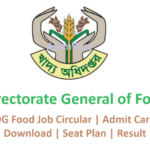The IELTS (International English Language Testing System) Writing test consists of two tasks: Task 1 and Task 2. I’ll provide a brief overview of each task along with some tips to help you perform well.
Task 1: Academic/General Training – Describing Graphs, Charts, and Diagrams
In Task 1, you will be presented with a graph, chart, table, or diagram that you need to describe in your own words. For Academic IELTS, the task is usually related to data representation, such as bar charts, line graphs, pie charts, or tables. For General Training, the task may involve a letter or information sharing.
Tips for Task 1:
- Analyze the data: Take a moment to carefully examine the information presented in the graph or chart. Identify the main trends, key features, and any significant changes.
- Structure your response: Start your response with a brief introduction summarizing the graph’s main points. Then, write an overview that covers the most significant trends. Finally, present specific details or comparisons as necessary.
- Use appropriate language: Vary your vocabulary and sentence structures. Include specific data and use appropriate academic language for Academic IELTS.
- Keep an eye on time: You have only 20 minutes for Task 1, so manage your time wisely. Aim to write around 150 words for Academic and 100-150 words for General Training.
Task 2: Academic/General Training – Essay Writing
In Task 2, you will be required to write an essay in response to a given prompt or question. For Academic IELTS, the essay topics may be related to education, society, technology, or other general topics. For General Training, the topics may be related to everyday life situations.
Tips for Task 2:
- Understand the question: Carefully read and analyze the essay prompt. Identify the main topic, and consider both sides of the argument if it’s a discussion or opinion-based question.
- Plan your essay: Spend a few minutes outlining your essay. Decide on your main points, supporting evidence, and the overall structure of your response.
- Stick to the task: Ensure that your essay addresses the specific question asked. Avoid going off-topic or providing irrelevant information.
- Use a coherent structure: Typically, a 4-paragraph essay structure is recommended – introduction, two main body paragraphs (each discussing a separate point), and a conclusion.
- Provide examples and evidence: Support your ideas with relevant examples, statistics, or personal experiences to make your arguments stronger.
- Manage your time: You have 40 minutes for Task 2, so allocate your time wisely. Spend about 5-10 minutes planning and the rest on writing.
Remember, practice is essential for improving your IELTS Writing skills. Regularly write essays on different topics and seek feedback to identify areas for improvement. Good luck with your IELTS preparation! If you have any specific questions or need further assistance, feel free to ask.










